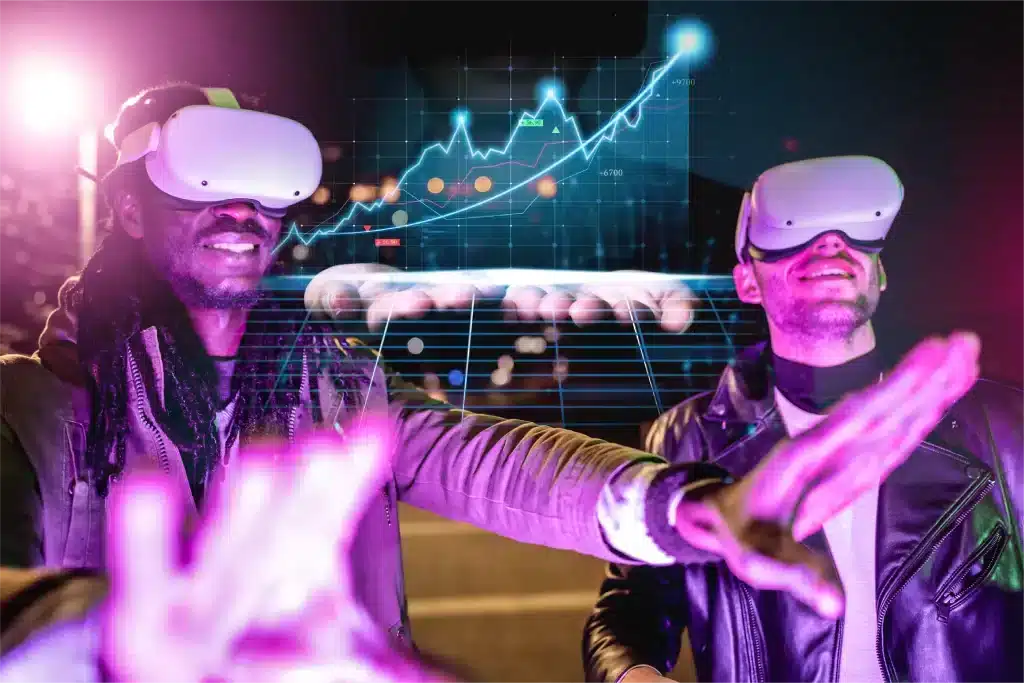In today’s rapidly advancing technology, the impact of digitalization on our lives is becoming increasingly tangible. So much so that we not only feel the state-of-art technological developments such as artificial intelligence, virtual reality, and blockchain but also frequently use them in our daily lives.
We have witnessed the biggest example of this with the launch of artificial intelligence (AI) tools this year. Chatbots such as ChatGPT and Bard AI have become the tools we use both in our business life and for researching any topic that comes to our mind. On the other hand, while these technological developments occurred so rapidly and we adapted to them very fast, questions arose about how this situation would continue and what consequences it would lead to. Let’s take a look at the technological trends that are expected to increase in 2023 and beyond and how they can shape our lives.
Artificial Intelligence and Machine Learning
One of the most popular technology trends is undoubtedly AI tools, which have gained popularity with developments in machine learning and deep learning. Especially since we entered the year 2023, AI tools have spread and attracted great attention. While there are even cleaning robots using AI, it would not be wrong to say that artificial intelligence permeates almost every aspect of our lives, from business life to household chores.
This naturally brought along discussions and conspiracy theories about the future of AI. Questions such as whether artificial intelligence can take our jobs or will it be able to defeat us one day are among the hot topics regarding artificial intelligence today. Although artificial intelligence has come a long way in recent years, it is clear that it will have significant effects on our behavior. But can it one day reach the level that can defeat humanity? Time will tell.
It is expected that advancements in artificial intelligence and machine learning will continue after 2023 as well, enabling faster and automated services in various industries.
Internet of Behaviors (IoB)
Internet of Behaviors (IoB) is a sales and marketing-oriented Internet of Things (IoT) technology and is used to provide users with more personalized services by tracking their online interactions, habits, preferences, and reactions. IoB, which monitors and analyzes people’s behavior in digital environments, is expected to affect our lives even more in future.
Thanks to IoB technologies, companies can identify the causes and possible consequences of their customer’s behavior and increase efficiency by taking action accordingly. IoB is expected to lead to major changes in the marketing and advertising industry. After 2023, it will continue to gain popularity in the business world thanks to its advantages such as personalized experience and the development of effective marketing strategies. However, companies need to consider data privacy and ethical issues since the use of IoB requires critical data collection and analysis processes.
Augmented Reality (AR)
Mixed Reality (MR), Virtual Reality (VR) and Augmented Reality (AR) can be confused with each other, but there are big differences between them. While there are discussions about these three exciting technologies about the difficulties of use and the performance of the products that have been developed, companies continue to produce headsets and glasses with MR, VR, or AR technologies. We have just witnessed a very good example of this last month.
Last month, Apple introduced its MR glasses named Vision Pro and attracted the attention of technology lovers. Mixed reality is a layer of synthetic content that is fixed in real time that will interact with real objects in our environment. Thanks to Vision Pro, which is announced as “much more than virtual glasses”, you can play video calls as if you were talking to each other, and games as if you were in it. In addition, Vision Pro gives users the opportunity to record with its multi-featured cameras, empowering them to capture moments and memories from their own perspective.
Virtual reality (VR) changes the user’s world completely and brings it to a simulation through wearable headgear or glasses. This technology, widely used especially in the fields of entertainment, games, and education, may affect our lives even more in the future. For example, it can enhance the learning process by providing more interactive and practical experiences in education.
Unlike virtual reality, augmented reality (AR) enriches the existing reality with additional images, graphics and sounds instead of completely changing the user’s reality. In addition to that, AR can be accessed not only through glasses and headsets but also through phones and tablets. The biggest example of augmented reality we’ve recently witnessed was Pokémon Go, which was wildly popular back in 2016. In this game, which has more than 10 million active players daily, players were viewing and collecting Pokémon via their phone camera on streets. Considering its previous influence, AR has the potential to have a closer impact on our lives in the future, offering new opportunities in various fields such as business, education, travel, entertainment, and more.

NFTs and Finance
You might be familiar with the term Non-Fungible Token (NFT) since it has recently made a breakthrough specifically in the arts. are a type of digital asset that represents ownership or proof of authenticity of a unique item or piece of content using blockchain technology. These digital content might be music, video games or collections that can be uniquely identified and tracked as a blockchain-based digital asset.
NFTs have a huge impact in finance in terms of tokenization of assets and digital asset management by making it possible to convert traditional assets into tokens, providing access to smaller investors. They also enable the creation of new financial products by using them in financial contracts and derivatives.
Although NFT is still an evolving technology, it has been criticized for raising concerns about energy consumption and counterfeiting. However, the popularity of NFTs is still increasing rapidly. In the future, NFTs are expected to be used in more industries, contributing to the digital asset economy and financial innovations.
Blockchain and Cryptocurrencies
Blockchain and cryptocurrencies are innovative technologies that have experienced a surge in popularity over the past decade, with immense potential for the future. At its core, blockchain is a decentralized technology that works as a distributed database and paves the way for secure and transparent transactions without the need for central authorities.
Cryptocurrencies, on the other hand, operate via blockchain technology. Popular cryptocurrencies such as Bitcoin, Ethereum, and Ripple, which are now known by almost everyone, have emerged as alternatives to traditional financial systems and attract attention with advantages such as low-cost and fast money transfer.
Speech and Image Processing Technologies
Speech and image processing technologies are one of the innovative developments that have developed rapidly and greatly affected our lives. To exemplify, voice-based virtual assistants have enabled people to interact with technology through voice commands, providing an easier, hands-free experience. One such virtual assistant, Apple Siri, has been in our lives for more than a decade and it does not only save time but also makes things easier by helping us where physical interaction with the technological device is impractical.
Image processing technologies use algorithms and techniques to manipulate and analyze digital images. The most common example of this from our everyday lives is smartphones incorporating biometric authentication methods such as facial recognition or fingerprint scanning. Image processing technologies are also used in the automotive industry, security systems, medical imaging, and many other fields.
Speech and image processing technologies carry the potential of developing further and increasing their impact on various aspects of our lives. So that voice-based digital assistants can work seamlessly, and handle increasingly complex tasks, while image processing algorithms advance to deliver more precise and intricate analysis.
Quantum Computing
Quantum computing stands out as a fairly new technology built upon the principles and mathematical framework of quantum theory. Quantum theory is a branch of physics that describes the behavior of particles at the smallest scales, such as atoms and subatomic particles, and it states that these particles can be in more than one place at the same time until they are observed.
If you are a tech enthusiast, you must have heard the term quantum computer. Standing out as much more powerful than classical computers limited to storing ones and zeros, quantum computers can lead to a significant transformation in many industries by solving complex problems faster. They are expected to be especially effective in solving complex mathematical problems, chemical and molecular calculations, data analysis, artificial intelligence, and cryptography.
Quantum computers are still in the early stages of development, and their practical use and widespread commercial availability are still evolving. Therefore, we can only imagine what it will be capable of in the future.


